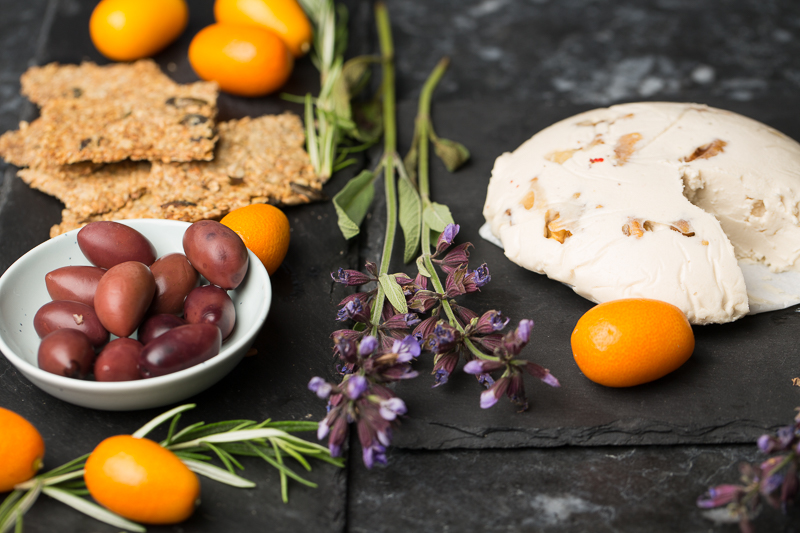
29 May Vegan Cheese Platter
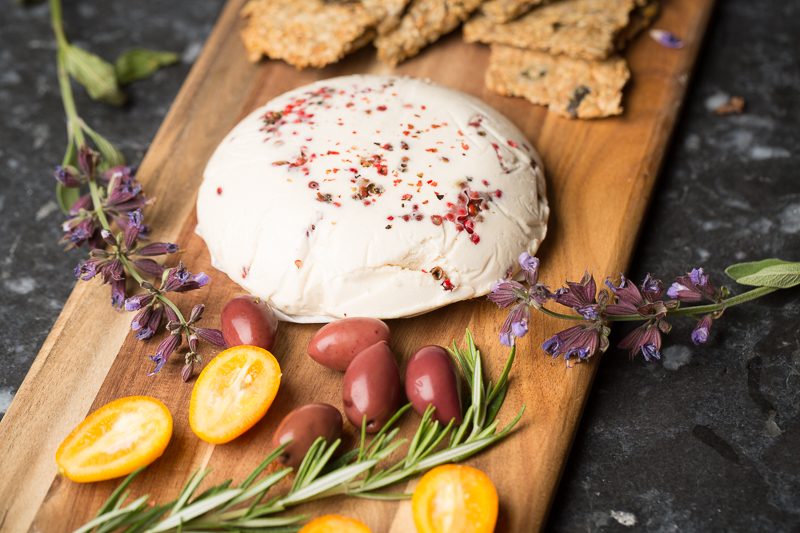 This post has been long in the making and I am finally able to share it with you. Its an exciting time for me in general and I feel so excited to share much of the things that have been going on lately in my life and in particular with Vegan Art. I still haven’t updated my website to comply with the new GDPR Compliance but I hope to do that soon. Believe it or not, I don’t even know if I have subscribers. That’s how out of touch I am with the whole subject. I think that for every little adjustment I would need an IT expert but since I wouldn’t send anyone information that they don’t want to receive I think I’m pretty safe. This may sound totally naive but as I said I feel like absolutely out of touch when it comes to such upgrades. Nevertheless, I try to learn new skills as much as possible and that is how it all started with this vegan cheese platter.
This post has been long in the making and I am finally able to share it with you. Its an exciting time for me in general and I feel so excited to share much of the things that have been going on lately in my life and in particular with Vegan Art. I still haven’t updated my website to comply with the new GDPR Compliance but I hope to do that soon. Believe it or not, I don’t even know if I have subscribers. That’s how out of touch I am with the whole subject. I think that for every little adjustment I would need an IT expert but since I wouldn’t send anyone information that they don’t want to receive I think I’m pretty safe. This may sound totally naive but as I said I feel like absolutely out of touch when it comes to such upgrades. Nevertheless, I try to learn new skills as much as possible and that is how it all started with this vegan cheese platter.
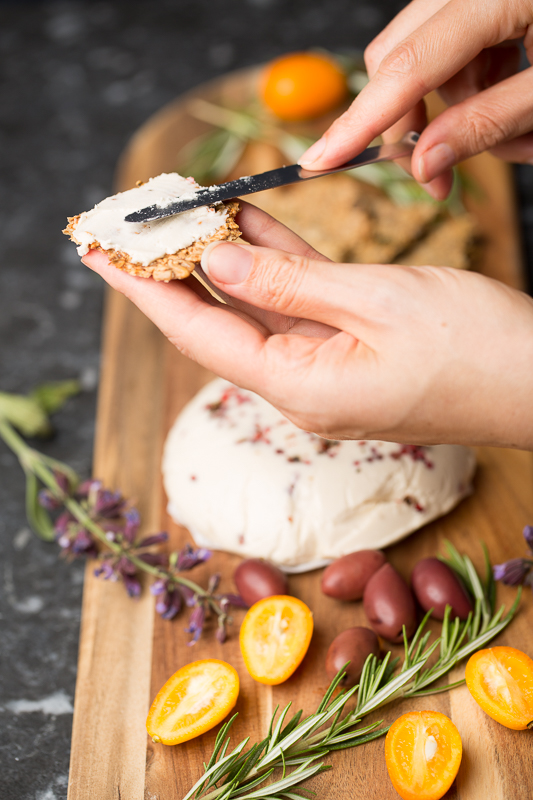 Well, before I bore you on that subject let’s move on to the reason why I am here and that is to share my cheese making journey with a little background information on a course I took recently with a real vegan cheese making afficionado. His name is Robert Hipfinger and he produces cheeses under the name “Veggaggio”. He lives in Austria and offers workshops all over the country about how to make vegan cheese. I had the pleasure of meeting him at one of his workshops in Vienna and he was kind enough to allow me to share one of his recipes with my audience.
Well, before I bore you on that subject let’s move on to the reason why I am here and that is to share my cheese making journey with a little background information on a course I took recently with a real vegan cheese making afficionado. His name is Robert Hipfinger and he produces cheeses under the name “Veggaggio”. He lives in Austria and offers workshops all over the country about how to make vegan cheese. I had the pleasure of meeting him at one of his workshops in Vienna and he was kind enough to allow me to share one of his recipes with my audience.
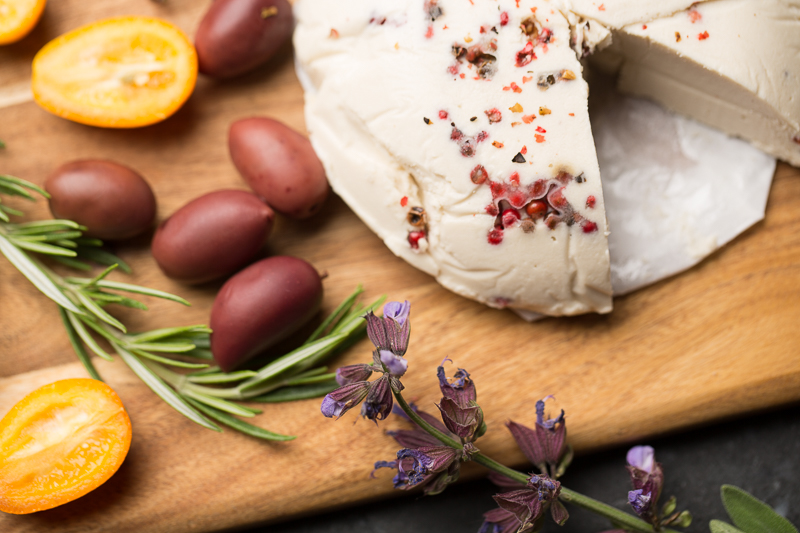 Previously I got some books on cheesemaking and started dabbling on my own but visiting the workshop gave me the ultimate push to really deepen my knowledge and to attempt new techniques which I found intimidating before. I am definitely nowhere near where I would like to be but I would say it is a great beginning and I am really thankful to Robert for expanding my vegan cheese making horizons. During the workshop we had the opportunity to test many cheeses among which were famous classics like Camembert, Feta, Blue Cheese and Mozarella. Since it is not allowed by EU Law to call vegan cheese by their original names he has given them creative new names like CaRico, RAW-zarella and Grassy Knoll. The blue cheese alternative was called Blue Danube and had an astonishing resemblance to the original, not only in taste but also in appearance. The Camembert alternative (Weißer Bertl) had the typical white mould that is characteristic for an original Camembert and tasted wonderful. Overall I couldn’t stop eating and felt like I had to control myself not to keep on helping myself to more.
Previously I got some books on cheesemaking and started dabbling on my own but visiting the workshop gave me the ultimate push to really deepen my knowledge and to attempt new techniques which I found intimidating before. I am definitely nowhere near where I would like to be but I would say it is a great beginning and I am really thankful to Robert for expanding my vegan cheese making horizons. During the workshop we had the opportunity to test many cheeses among which were famous classics like Camembert, Feta, Blue Cheese and Mozarella. Since it is not allowed by EU Law to call vegan cheese by their original names he has given them creative new names like CaRico, RAW-zarella and Grassy Knoll. The blue cheese alternative was called Blue Danube and had an astonishing resemblance to the original, not only in taste but also in appearance. The Camembert alternative (Weißer Bertl) had the typical white mould that is characteristic for an original Camembert and tasted wonderful. Overall I couldn’t stop eating and felt like I had to control myself not to keep on helping myself to more.
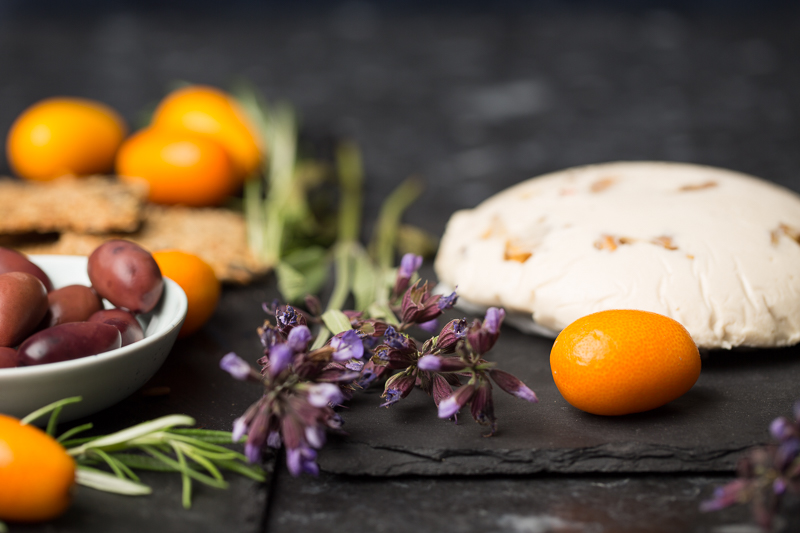 We continued by making more or less all of the cheeses that we taste tested and got to take home our culinary creations. Since there are quite a lot of equipment and special cultures required to make a Camembert or Blue Cheese alternative I opted to start with something simpler and a more easily accessible recipe and decided on Red Carpet and Walnut Dream. Both recipes are a creation of Robert’s with a base recipe from Miyoko Schinner. I started off with a base recipe for cashew cheese using rejuvelac as the culture to achieve that characteristic tangy flavor of cheese. I then moved on to the actual recipe which features two flavors, the first being pink peppercorn and the second walnut. My first attempt was a similar cheese called Grassy Knoll which gets most of its flavor from the addition of chives. Robert encouraged us to play around with the recipes and adjust things to make it work for us, which I really liked since I don’t like to stick to0 exactly to any recipe. However this time I wanted to recreate the cheeses I tasted and was very pleased that they all turned out well.
We continued by making more or less all of the cheeses that we taste tested and got to take home our culinary creations. Since there are quite a lot of equipment and special cultures required to make a Camembert or Blue Cheese alternative I opted to start with something simpler and a more easily accessible recipe and decided on Red Carpet and Walnut Dream. Both recipes are a creation of Robert’s with a base recipe from Miyoko Schinner. I started off with a base recipe for cashew cheese using rejuvelac as the culture to achieve that characteristic tangy flavor of cheese. I then moved on to the actual recipe which features two flavors, the first being pink peppercorn and the second walnut. My first attempt was a similar cheese called Grassy Knoll which gets most of its flavor from the addition of chives. Robert encouraged us to play around with the recipes and adjust things to make it work for us, which I really liked since I don’t like to stick to0 exactly to any recipe. However this time I wanted to recreate the cheeses I tasted and was very pleased that they all turned out well.
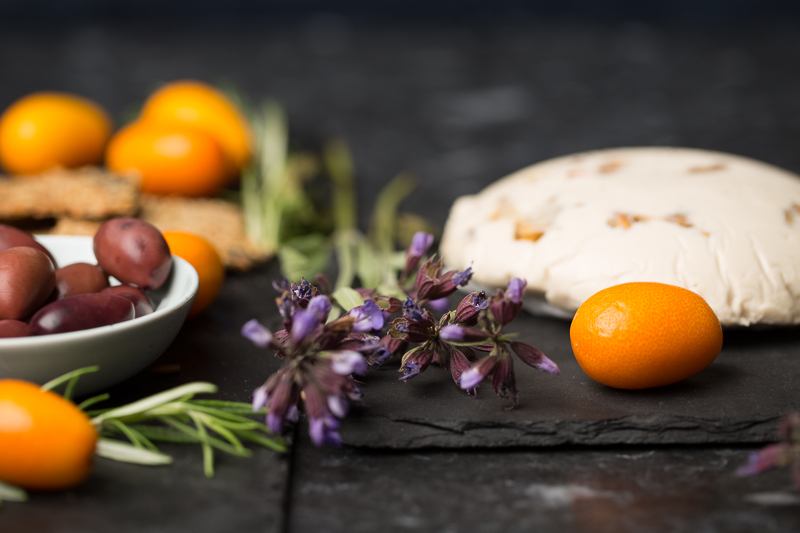 All in all I would say that cheese making is not so complicated as it looks. It is mostly about overcoming mental hurdles about things being complicated. Everything I have learned started somewhere and I know that many attempts and even many mistakes lead to a better understanding about how things should be done. The learning process is also what makes things exciting and the desire to improve things.
All in all I would say that cheese making is not so complicated as it looks. It is mostly about overcoming mental hurdles about things being complicated. Everything I have learned started somewhere and I know that many attempts and even many mistakes lead to a better understanding about how things should be done. The learning process is also what makes things exciting and the desire to improve things.
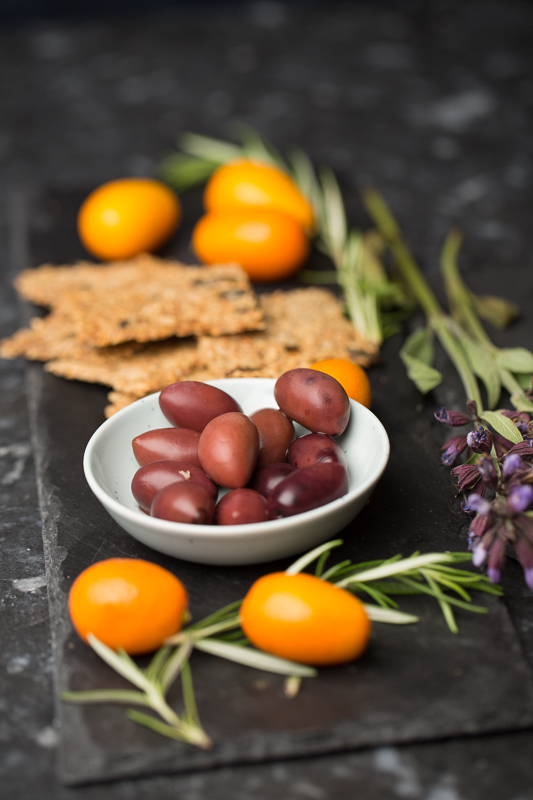 I am sure my culinary journey is far from over and I look forward to sharing more of my adventures with you and hope you will join me and also give me feedback about how it works for you. Also, feel free to make requests about recipes you would like to see more of here on the blog. I am far from having covered many topics and I’m sure I have neglected certain themes entirely, like soup. I know I should be posting a soup recipe for so long but it just hasn’t happened yet.I am sure you will love this vegan cheese platter and if you are ever in Vienna or live here already I encourage you to visit Robert’s workshop. You won’t be disappointed.
I am sure my culinary journey is far from over and I look forward to sharing more of my adventures with you and hope you will join me and also give me feedback about how it works for you. Also, feel free to make requests about recipes you would like to see more of here on the blog. I am far from having covered many topics and I’m sure I have neglected certain themes entirely, like soup. I know I should be posting a soup recipe for so long but it just hasn’t happened yet.I am sure you will love this vegan cheese platter and if you are ever in Vienna or live here already I encourage you to visit Robert’s workshop. You won’t be disappointed.
I look forward to hearing from you and would love to hear how it goes if you give it a try. Thank you for stopping by!
 Red Carpet, Walnut Dream
Red Carpet, Walnut Dream
Sliceable Alternative
© Robert Hipfinger aka “Veggagio”
Cashew Cheese from “Artisan Vegan Cheese” by Miyoko Schinner
Basis Recipe Cashew Cheese
Ingredients:
260 raw cashews, soaked for 3-8 hours in water and strained
1 pinch of salt
60-120 ml Rejuvelac
Method:
- Mix all the ingredients in a powerful blender until perfectly smooth.
- Let the cheese ripen at room temperature for 8-36 hours. The mass will become firmer as it ripens.
- This basis can be kept sealed in an air tight container in the refrigerator for up to 2 weeks.
Red Carpet, Walnut Dream
Ingredients:
1 basis recipe cashew cheese
160-180 g coconut oil, refined and odorless (melted in a bain marie)
3-5 Tablespoons nutritional yeast (the more, the more intense)
1/4-1/2 tsp fine sea salt (to your taste)
Cheese Platter Additions:
olives
kumquats
tomatoes
crackers
fresh herbs
other seasonal fruits or vegetables

Method:
- Combine all the ingredients in a powerful blender and blend until completely smooth.
- Take two individual bowl and line with plastic wrap or parchment paper and cover the bottom with pink peppercorns and the other with walnuts. Cover with half of the mixture of each bowl followed by another sprinkling of pink peppercorns and walnuts followed by the remaining cheese mass. Smooth out with a spatula.
- Cover and place in the fridge over night to firm. Enjoy the next day.
- In plastic wrap you can keep the cheese up to two weeks in the fridge.
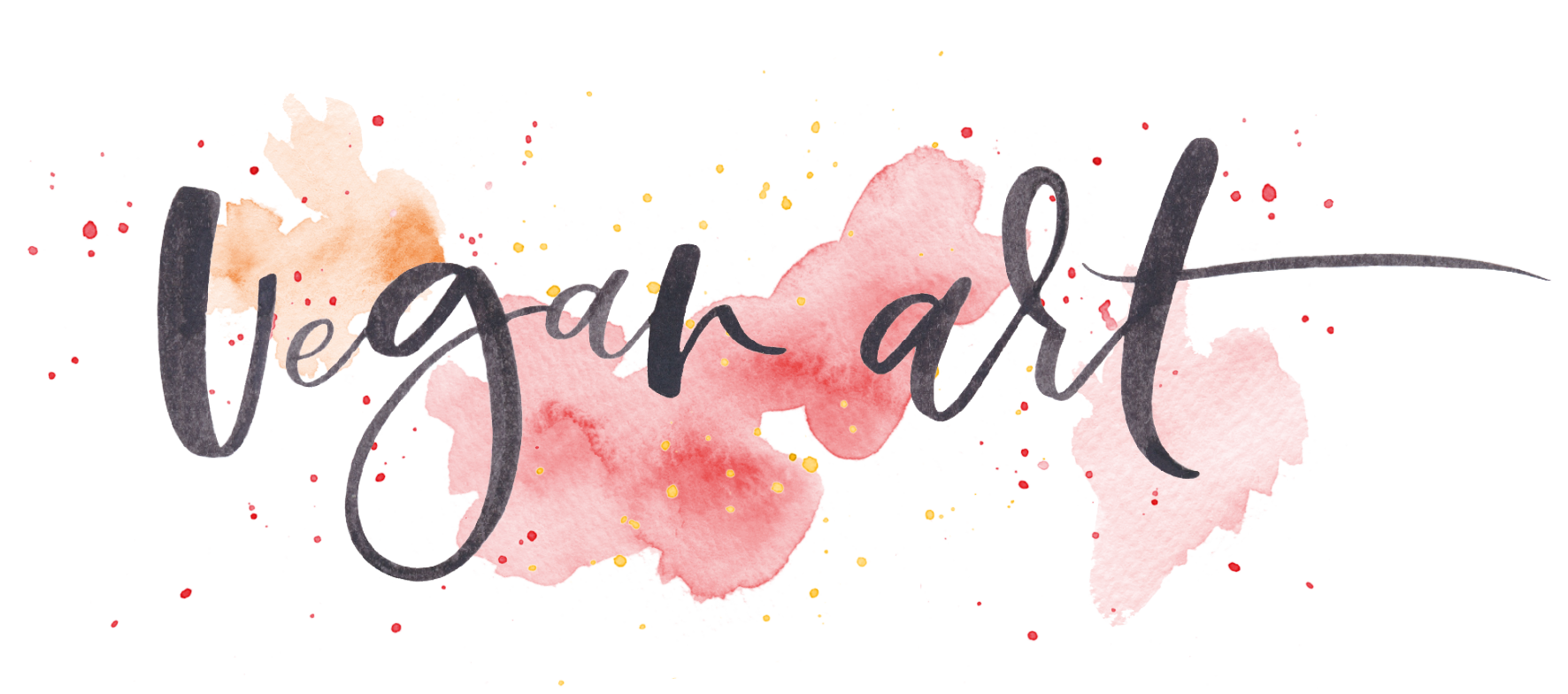


No Comments